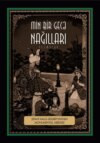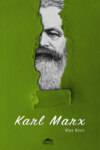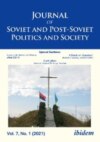Kitabı oku: «Why Bowie Matters», sayfa 4
If we accept that the song can be taken more seriously, then the gnome’s brother, who appears at the end of the narrator’s bed one morning, is the key to further interpretation. David Jones had, more than once, woken up to find his half-brother, Terry, back from his nomadic travels and sharing his bedroom. Terry was ten when he first joined the Jones family at Stansfield Road in Brixton; but when they moved to Bromley in 1953, Terry, who hated John Jones, stayed behind. In June 1955 he came back, taking the bedroom next to David’s on Plaistow Grove; in November, he left again for the air force, and didn’t return for three years. He couldn’t stay, Peggy explained when Terry turned up again, unkempt and disturbed – the back bedrooms had been merged into one, and there was no room – so he moved out to Forest Hill, but still caught the bus regularly to Bromley, to visit David. Terry was already a major influence on his younger half-brother, helping him, as Peter and Leni Gillman put it, to ‘discover a new world beyond the drab confines of the suburbs’. He took David to jazz clubs in Soho, gave him a copy of Kerouac’s On the Road, and encouraged him towards saxophone lessons. ‘I thought the world of David,’ he later said, ‘and he thought the world of me.’ An intermittent resident at Plaistow Grove over the next decade, Terry was also in and out of local hospitals for the mentally ill. He was developing schizophrenia.
In February 1967, David and Terry – now both adults – walked down to the Bromel Club to see Cream in concert. ‘I was very disturbed,’ Bowie later recalled, ‘because the music was affecting him adversely. His particular illness was somewhere between schizophrenia and manic depressiveness … I remember having to take him home.’ According to Buckley’s biography, Terry ‘began pawing the road’ after the gig. ‘He could see cracks in the tarmac and flames rising up, as if from the underworld. Bowie was scared witless … this example of someone so close being possessed was horrifying.’ He was, Buckley goes on, ‘frightened that his own mind would split down the middle, too’. Bowie’s own recollection is, as we’ve seen, less melodramatic, but he confirmed in another interview, with a formality that suggests he was choosing his words carefully, that ‘one puts oneself through such psychological damage trying to avoid the threat of insanity, you start to approach the very thing that you’re scared of. Because of the tragedy inflicted, especially on my mother’s side … that was something I was terribly fearful of.’ His grandmother, Margaret, had also suffered from mental illness, as had his aunts Una, Nora and Vivienne; Terry’s episode at the Bromel Club brought it closer to home, though it’s worth noting that cousin Kristina dismissed Terry’s experience as a ‘bad acid trip’, and the idea of insanity in the family as one of David’s long-term lies, or ‘porkies’. ‘It just wasn’t true,’ she told Francis Whately in 2019.
Terry features obliquely in at least two of Bowie’s songs. ‘Jump They Say’ (1993), Bowie explained, was ‘semi-based on my impression of my stepbrother’; he was cagier about ‘The Bewlay Brothers’ (1971), throwing out various decoy explanations before admitting, in 1977, that it was about himself and Terry, with ‘Bewlay’ as an echo of his own stage name. ‘The Laughing Gnome’ is never discussed in this context – it is, at best, accepted by critics as a bit of fun, or in the words of Peter and Leni Gillman, ‘a delightful children’s record’ – but it’s tempting to add it to the list of songs inspired by Bowie’s half-brother, especially if we bear in mind a story that Kristina tells about Terry and their grandmother. Little Terry had nervously smiled after being scolded. ‘Nanny said, “Go on, laugh again,” and he smirked again, and she smacked him across the ear and said, “That’ll teach you to laugh at me.”’ Ha ha ha. Hee hee hee.
It’s a persuasive reading. But to label ‘The Laughing Gnome’ with a single interpretation – a song about Terry Burns, the manic outsider who kept turning up at David’s house, and was sent away – would be reductive. Any Bowie song is, like the man who wrote it, a matrix of information, with multiple possible patterns of connection. Even single words can be loaded, and can pivot in various directions, suggesting different links. We can join the dots of those words and phrases in several ways and create a convincing structure, but with a twist, and from a new perspective, the picture changes. As I’ve suggested, ‘The Laughing Gnome’ also explores Bowie’s to-and-fro tension between independent adventure and the security of home. It’s also, let’s face it, a comedy song, a novelty number, a ‘delightful children’s record’. It can be all those things and more. An interview with novelist Hanif Kureishi gives a further quick twist and suggests a final angle.
Kureishi recalls that, when they worked on Buddha of Suburbia together, Bowie ‘would talk about how awkward it was in the house for his mother and father when Terry was around, how difficult and disturbing it was’. But he immediately goes on, without changing the subject, to describe his own experiences with Bowie on the phone. ‘I got the sense you have with some psychotic people when they’re just talking to themselves. It’s just a monologue, and he is just sharing with you what’s going round and round in his head.’ From Terry’s schizophrenia to David’s seeming psychosis, without a jump: the seamless segue is telling, and it’s a short step from there to Chris O’Leary’s suggestion that ‘The Laughing Gnome’ is ‘a man losing his mind, a schizophrenic’s conversation with himself’.
It would seem overly simplistic to suggest that Bowie channelled a fear of insanity directly into his work – ‘All the Madmen’ (1970), for instance, or the ‘crack in the sky and the hand reaching down to me’ from ‘Oh! You Pretty Things’ (1971) – unless he’d admitted it himself. ‘I felt I was the lucky one because I was an artist and it would never happen to me because I could put all my psychological excesses into my music and then I could be always throwing it off.’ This confession, included in Dylan Jones’s book, follows directly on from the quotation above (‘one puts oneself through such psychological damage …’). Note how Bowie’s formal poise switches into a rushed incantation; an attempt to make something true by saying it quickly.
In this sense, then, ‘The Laughing Gnome’ is not just about Terry, but about what Terry meant to his younger half-brother: a troubled alter-ego who always comes back when he’s sent away, a reminder of what Bowie could have been, and what he feared he could still become. The laughing gnome is a figure embodying both madness and truth: manic laughter and gnomic warnings. You can’t catch him, and you can’t get away from him. He can’t be successfully repressed, but he can be accepted and embraced, not just peaceably but profitably (‘we’re living on caviar and honey, cause they’re earning me lots of money’). If we follow this interpretation to its conclusion, Bowie was not just pushing himself because he hungered for fame. He was driven to keep creating because he wanted to expel the ideas from his head into his art; he preferred to make the hallucination into a comedy character, rather than hear that high-pitched chuckling confined to his own head. He wanted to exorcise the energy before it could drive him crazy. He felt his art would save him, and perhaps it did; as the song predicts, it certainly earned him success.
Was his creative drive really fuelled, at least in part, by this fear of mental illness? We can’t be sure: we can only try to read back through Bowie’s public art into his private motivations, using the facts of his life as a framework. But it’s a valid way of seeing, and it makes a good story.

Bowie kept trying, despite all the setbacks, and kept working, and kept moving. After another brief stay at Plaistow Grove in January 1969, he’d relocated to 24 Foxgrove Road in Beckenham, which he shared with Barrie Jackson, a childhood friend from his old street. The following month he moved in with Mary Finnigan, in the ground-floor flat of the same house. His relationship with Finnigan quickly changed from neighbours to lovers, and then adapted again when he met Angie Barnett on Wednesday 9 April. In August, David and Angie moved to Haddon Hall, at 42 Southend Road, Beckenham, where they rented the entire ground floor of a Victorian villa.
Both Haddon Hall and 24 Foxgrove Road have been demolished and replaced with flats. You can still visit both sites, though, and realise how close they are to each other; Foxgrove Road is five minutes up the hill from Beckenham Junction Station, and 42 Southend Road less than ten minutes’ further walk in the same direction. Beckenham Junction, in turn, is just two stops down the line from Bromley. Again, Bowie’s sense of adventure, experiment and escape was tempered with caution. He’d moved out of his parents’ home, and in with a neighbour from his childhood street; he then relocated downstairs with Mary Finnigan, making friends with her young children and becoming part of a new family household. When he finally rented his own place with a long-term girlfriend, he was still only a couple of miles from his childhood home; easily close enough for his mother to come round and prepare Sunday lunches for Bowie and his friends. Peggy later moved to a flat in Beckenham, even nearer to her adult son, and when Bowie and Angie married, they held the ceremony at Bromley Register Office, with the reception in the Swan and Mitre pub. However, while Haddon Hall was only a few miles from Plaistow Grove, it was a world away from the tiny terraced house where David had grown up: a gothic playground with a grand piano, stained-glass windows, heavy oak and crushed velvet upholstery. Bowie and Angie would go out to clubs together and bring dates back; band members slept on mattresses across the landing, and the basement was converted into a rehearsal studio.
Finally, he’d found what he’d been working towards. His former lover Mary had made friends with his new girlfriend Angie; he invited his friend, producer Tony Visconti, to move in with them. Together, David and Mary Finnigan developed an Arts Lab at the Three Tuns, down the hill on Beckenham High Street. Bowie was the star act, backed by psychedelic liquid light shows, and the audience reached over two hundred during the summer. They organised an open-air festival for the same day as Woodstock, at Croydon Road Recreation Ground (the bandstand is still there). Bowie started to record a new album in July, and released ‘Space Oddity’ as a single on 11 July, in time to catch the buzz around the moon landing. John Jones wrote to Ken Pitt that ‘David is keeping very cheerful and seems to be keeping himself fully occupied.’ It was summer 1969. After seven years of trying, Bowie had made it.
But there was another heavy blow in his step-by-step progress towards greater independence. His move into Haddon Hall immediately followed the death of John Jones, at age fifty-six, on 5 August. Bowie had just returned from a festival in Malta, and had come back in time to perform at the Arts Lab. Mary Finnigan informed him after the set that his father was seriously ill, and Bowie arrived at Plaistow Grove to find him semi-conscious. He struggled through the Free Festival, in what he understandably called ‘one of my terrible moods’. Later, he explained that he’d lost his father ‘at a point where I was just beginning to grow up a little bit and appreciate that I would have to stretch out my hand a little for us ever to get to know each other. He just died at the wrong damn time …’
‘Space Oddity’ started slowly in the chart, then rose to number 25, earning Bowie his first appearance on Top of the Pops in early October. The single reached number 5 at the start of November, the perfect lead-in to his second album on Friday 14 of that month. With a youthful mixture of humility and arrogance, Bowie told the NME, ‘I’ve been the male equivalent of a dumb blonde for a few years, and I was beginning to despair of people accepting me for my music. It may be fine for a male model to be told he’s a great looking guy but that doesn’t help a singer much.’ In early 1970 he formed a new band, the Hype, teaming up for the first time with guitarist Mick Ronson and drummer Woody Woodmansey. The team we know as the Spiders from Mars was almost entirely in place, adopting larger-than-life stage personae (‘Spaceman’, ‘Hypeman’, ‘Gangsterman’): with hindsight, it looks like the start of glam rock. And then in March 1970 Bowie released his follow-up to ‘Space Oddity’, ‘The Prettiest Star’. It sold 798 copies and died. He wouldn’t have another hit single for two years. He hadn’t made it after all.
I sat in the Zizzi on Beckenham High Street, which is now decorated with a mural of Bowie and key quotations from his songs in the windows. At the next table, three teenage lads ordered bashfully from a blonde waitress, in front of the lyrics ‘When you’re a boy, you can wear a uniform; when you’re a boy, other boys check you out.’ Fifty years ago, Bowie sat here with his acoustic guitar, playing for a crowd of regulars. This Zizzi was the Three Tuns until 1995, then the Rat and Parrot. In 2001, Mary Finnigan and supporters installed a plaque celebrating the Arts Lab and anticipating that the pub’s former name would be restored: it was, but only for a year. The plaque is still out front, with its perhaps overambitious boast that Bowie launched his career here; a Three Tuns sign hangs alongside the Zizzi logo.
It’s hard to know the truth about any period in Bowie’s life. Some stories are built on more solid foundations, and some are shakier. The popular idea that Bowie shocked the world in the early 1970s as a fully-formed genius makes him easier to idolise, perhaps, but harder to aspire to, and harder to identify with. It is easier to treat him as a creature of uncanny talent, an unearthly one-off, because it erases the years of struggle behind his success and allows us to think of him as different to the rest of us. But in many ways, he wasn’t different to the rest of us. He wasn’t trained as a singer. He didn’t show early signs of musical ability. He was an uncertain frontman as a teenager, insecure about his own vocal abilities. You can hear him improving from single to single during the 1960s. He taught himself saxophone at the age of fifteen, learning to play along with his favourite records, and focused on it while he was convalescing from his eye injury: he took lessons, but only from spring until summer 1962. He could pick out chords on a guitar and piano, but couldn’t read or write music; he used descriptions in a book to choose the instruments for his debut album, and relied on colour-coded charts, instead of conventional notation, for ‘Space Oddity’. As a dancer, an artist and an actor he was an enthusiastic amateur. He had the privileges of being a white, lower-middle-class teenager in a little house in a safe neighbourhood; but he also had to deal with a troubled half-brother who clashed with his parents, a family history of mental illness and the early loss of his father.
In September 1972, David Jones sailed with his wife Angie to New York on the QE2. He was now not just David Bowie, but Ziggy Stardust, complete with the crimson hair, jumpsuits and platform boots. They checked into the Plaza Hotel on Central Park and went up to their suite. ‘Babe,’ said Angie – or so the story goes – as she looked around at the decor, the view and the gifts from the production company, ‘we’ve made it.’
He’d made it, finally. But it was now ten years since David Jones had joined The Konrads and played Shadows covers at the Royal Bell in Bromley: ten years of false starts, frustrations and failures. Yes, Bowie was exceptional, but part of what distinguished him from all the other boys in bands, in Bromley 1962 – and the only reason we’ve heard of him at all – was his refusal to give up in those early days. The story matters because Bowie showed us, among other things, what an ordinary person can become, with enough tenacity and self-belief. It took him ten years. If you started now, where could you be in a decade?
2
CONNECTING
Like most Bowie fans, I find his song titles and lyrics popping regularly into my head, framing my thought patterns and commenting on what I’m doing, like comic-book captions. You’ll have your own personal selection of phrases and soundbites. One of mine is from ‘Five Years’. In the second verse, his head reeling from the news of impending apocalypse, Bowie finds himself assaulted by the sounds of telephones, opera houses and favourite songs, seeing ‘boys, toys, electric irons and TVs. My brain hurt like a warehouse,’ he wails. ‘It had no room to spare; I had to cram so many things to store everything in there.’ The line hooks in my head not just because it describes so many of Bowie’s lyrics, but because it captures the way his greatest songs make me feel: crammed with ideas and energy.
We’re immersed again in this sense of crowded, overflowing impressions in ‘Life on Mars?’, with its pull back from cavemen, sailors and lawmen to a dreamscape geography that roams from America to Ibiza to the Norfolk Broads, starring Mickey Mouse and his hordes, Lennon (or possibly Lenin) and ‘my mother’. There’s a hypnotic, almost robotic stream of information in ‘Looking for Satellites’, with its chanted litany of commercial images: nowhere, shampoo, TV, combat, Boy’s Own, slim tie, showdown. ‘Can’t stop,’ Bowie intones, before beginning the list again. These mixed-up fragments are, to an extent, the result of Bowie’s experimental approach to writing, which in the 1970s included improvised composition at the mic and cutting up song-words with scissors, and in the 1990s used a laptop program called the Verbasizer to randomise sentences. But they also speak to his hunger for information, and his impatience – again, particularly during the 1970s and the mid-1990s – for new challenges, new genres, new prompts and provocations.
His lyrics are typically packed with references: passing nods, brief quotations and half-hidden echoes. If we follow his leads, tracing them back towards their sources, we can learn more about him; but we can also, as he did, simply learn more, for the sake of it. And as we follow each lead further back, with each reference splitting and branching, taking us beyond the source and beyond Bowie’s intentions, we learn more again: about the world, and perhaps also about ourselves.
I’m a Bowie fan, but also a professor of cultural studies; and so the image of a brain like a warehouse, with no room to spare, reminds me of concepts from academic theory. The anthropologist Victor Turner, for instance, describes liminality, or the state of in-betweenness, as ‘fructile chaos, a fertile nothingness, a storehouse of possibilities, not by any means a random assemblage but a striving after new forms and structure, a gestation process’. Words and phrases leap out of this passage, linking up with Bowie’s imagery: chaos, a storehouse, a warehouse with no room. We can jump back and forward between his lyrics and Turner’s theory, joining the dots.
In ‘Looking for Satellites’, the narrator announces that we are ‘nowhere’: ‘where do we go from here?’ he wonders, scanning the sky. ‘There’s nothing in our eyes; as lonely as a moon, misty and far away.’ It’s an expression of emptiness, but, as in Turner’s account, the nothingness is fertile: from this isolation comes a feed of images, channelled through Bowie as if he’s the satellite receiver. Shampoo. TV. Combat. Boy’s Own. (Or Boyzone – Bowie denied the pun, but that doesn’t stop us from hearing a double meaning.) As listeners, we try to make sense of this list, ‘striving after new forms and structure’ rather than dismissing it as ‘random assemblage’.
Turner’s description, then, can help us to understand how we construct meaning from Bowie’s flow of fragmented phrases, and transform them from a chaos of possibilities into a new understanding. We take part in the process, helping the song to ‘gestate’, giving the words a logical framework and forming them into a more solid shape. The songs change through our personal interpretation, which is why your ‘Life on Mars?’ – like your ‘Looking for Satellites’ and your ‘Five Years’ – will be different from mine. (On the simplest level, if you hear ‘Lennon’ and ‘Boyzone’ instead of ‘Lenin’ and ‘Boy’s Own’, the pictures in your head will be very different.) We fill in the gaps between his fragments in different ways, investing them with our own experiences and imagination. Of course, Turner wasn’t talking about David Bowie, and that doesn’t matter. Academic theory is a tool that can be used outside its original context, to open up and illuminate our everyday lives.
From Bowie’s crowded warehouse and Turner’s storehouse of possibilities, my mind leaps sideways to the exhibits of the international David Bowie Is exhibition – perhaps the closest we’ll get to wandering through his subconscious – and the studio of his ‘Where Are We Now?’ video from 2013, crammed with souvenirs and projections of the past.
I think of other theorists, from different fields, whose imagery intersects and connects. Fredric Jameson describes postmodern culture as an ‘imaginary museum’ in which we can only ‘imitate dead styles’ and ‘speak through the masks and with the voices of the styles’: a museum is, after all, another kind of warehouse, full of historical costumes and props. From there, I remember another theorist with a similar metaphor. Mikhail Bakhtin suggests that literature is a kind of ‘castle’, filled with ‘the traces of centuries and generations … arranged in it in visible form as various parts of its architecture, in furnishings, weapons, the ancestral portrait gallery, the family archives’. To Bakhtin, fiction itself is filled with ‘isolated curiosities and rarities … self-sufficient items – curious, odd, wondrous … congealed “suddenlys”, adventures turned into things’. A warehouse, a storehouse, a museum, a castle full of curiosities and rarities: these three theorists have all, in their different contexts, drawn on similar images that overlap and echo, rebounding off each other in their own chamber of ideas, and suggesting new angles on Bowie’s work.
My first Bowie album was 1983’s Let’s Dance, which to me was a soundtrack for imaginary films. I visualised cinematic love scenes with ‘Criminal World’ as the swoony, classy backing music – I was thirteen, after all – and action sequences edited to ‘Cat People’. The spoken introduction to ‘Modern Love’ – Bowie’s gruff ‘I know when to go out. I know when to stay in. Get things done’ – sounded like a sample from a TV drama; the opening voiceover from a gritty British detective. But it was ‘Ricochet’, the challenging, art-rock track that opened side B, that really gripped me. March of flowers! March of dimes! As I hinted in the introduction, I knew it had to mean something; something sophisticated that I didn’t yet understand. (And in a way it did: the March of Dimes is a real organisation founded by President Roosevelt, though if ‘march of flowers’ has another, deeper significance, it still escapes me.)
‘Ricochet’, to me, opened up worlds. It filled my warehouse-head with ideas, and I made my own sense of them. An accented voice, distorted by static, recited weary reports of workers who struggled off to the gates before the sun, and even at night dreamed of ‘tramlines, factories, pieces of machinery, mineshafts, things like that’. In villages overshadowed by industry, parents turned the holy pictures to the wall, as warnings blared out from media preachers and their backing choirs. Sound of thunder! Sound of gold! Sound of the devil breaking parole! ‘Ricochet’ sketches a fable of oppression and resistance through a scattering of vivid domestic details and spoken confessionals, interrupted by the chanted slogans of political and religious rhetoric. Despite the relentless drumbeats and doomy pronouncements – ‘these are the prisons, these are the crimes, teaching life in a violent new way’ – the song is punctuated with an upbeat shout of reassurance. ‘Ricochet! It’s not the end of the world.’
I still don’t know what it was meant to mean, but I know what it meant to me. The ideas gathered in my brain and spilled out, leading me down my own creative paths beyond the song itself. I created characters based on ‘Ricochet’ – it sounded like a superhero, the codename for a future cop or teenage rebel – and wrote stories and scripts, drawing logos and costume designs. (I even imagined how my hero ‘Ricochet’ would dress, and on a trip to Lewisham Shopping Centre bought the jacket closest to the one in my head.) I don’t believe I would have studied poetry at school with anything like the same enthusiasm if Bowie’s lyrics hadn’t made me feel that unlocking the meaning of enigmatic words and phrases could be a form of investigation, a fascinating process of detection. In a way, it was an important point on the route that took me into academia and brought me here.
Let’s Dance isn’t everyone’s favourite (or first) Bowie album, but however you originally encountered him, you may have had the same experience. If you came to Bowie in 1993, for instance, there was ‘Strangers When We Meet’, on Buddha of Suburbia, with its cosmopolitan references to ‘no trendy rechauffé … humming Rheingold, we trade by vendu’. The song appears again on 1. Outside (1995), where you could also ponder over the passing mentions of architects Philip Johnson and Richard Rogers. During the ‘Berlin’ period, you could have dreamed cities from the soundscapes of ‘Warszawa’ (Low), with its haunting, almost decipherable calls in an invented language (‘Sula vie dilejo; solo vie milejo’). At the end of Hunky Dory, from 1971, there’s the riddling story of ‘The Bewlay Brothers’, also known as the ‘moon boys’ and the ‘Kings of Oblivion’: one brother was stone, and one, more malleable, was wax, a ‘chameleon, comedian, Corinthian and caricature’. In 2016, of course, Bowie left us with the last puzzles of ‘Lazarus’ and ‘Blackstar’, a final message told across two enigmatic videos: a jewelled skull in an astronaut helmet, a villa of Ormen, a dying man with bandaged eyes, and a manic double wearing the striped shirt from Bowie’s far earlier Station to Station album. ‘Station to Station’ itself, from 1976, is loaded with occult images, invoking the Tree of Life (another kind of map, or matrix) as it branches ‘from Kether to Malkuth’. Even the seemingly simple rocker ‘Janine’, on Bowie’s second LP from 1969, includes evocative word-choices – ‘your strange demand to collocate my mind’ – and images that prefigure the more obviously complex ‘Ashes to Ashes’: ‘if you take an axe to me you’ll kill another man, not me at all.’
We don’t need to know that Franz Kafka wrote: ‘a book must be the axe for the frozen sea inside us,’ to have our imagination struck and sparked by that sudden image in ‘Janine’. We don’t have to understand the Tree of Life, and the relative positions of Kether and Malkuth (crown and kingdom, respectively) to feel the power of the evocation in ‘Station to Station’. We don’t need to know that Ormen is also a town in Norway, and that the word translates as ‘serpent’, to be captured by the opening words of ‘Lazarus’; we don’t need to remember that Bowie wore a ‘Song of Norway’ T-shirt in the video for ‘Where Are We Now?’ or be aware that Hermione Farthingale acted in a movie called Song of Norway just after their relationship ended. We don’t need to read ‘The Bewlay Brothers’ as a disguised exploration of David and Terry’s relationship, or even know what ‘Corinthian’ means.
To me, for instance, ‘comedian’ and ‘Corinthian’ immediately conjure characters from Alan Moore’s graphic novel Watchmen and Neil Gaiman’s Sandman. My own personal associations are far from Bowie’s intentions – his ‘Uncle Arthur’ is disparaged for being a Batman fan – but those comic book images of a costumed vigilante and a serial killer, respectively, seem tonally in tune with his moon boys and ‘Kings of Oblivion’, and they add my own mental pictures to his lyrics. As a teenager, I storyboarded short films in my head to ‘Criminal World’ and ‘Cat People’ without even seeing the videos, let alone knowing that ‘Criminal World’ was originally a 1977 track by Metro, or that there were two films called Cat People, from 1942 and 1982 (Bowie provided the soundtrack for the later one). I imagined vivid scenes from ‘Ricochet’ without doing any further research or reading, and over a decade before the internet. The images transfer from his crowded museum of a mental space to ours, filling it with, in Bakhtin’s words, ‘curious, odd, wondrous’ items, ‘adventures turned into things’. He shares them with us, and we make our own meanings from them.
Bowie’s work doesn’t need further research. We can simply enjoy the ideas he gifts us through his songs, without knowing where they come from, or what they originally meant. But following up his leads – and again, following his example, because he was a keen and impatient reader, an amateur film scholar, a broad-minded music fan, a respected art collector, and a devourer of visual culture – can make the experience richer.
Perhaps surprisingly, we can find examples of this approach applied even to Bowie’s first LP, the collection of short stories and oddities from 1967. Of course, Anthony Newley is the first lead. We saw that the young David was inspired by Stop the World – I Want to Get Off, and he adjusts his own Bromley accent into an archly theatrical delivery for songs like ‘Rubber Band’ and ‘Uncle Arthur’. ‘I wanted to sing about things that directly influenced me at the time,’ Bowie explained. ‘Anthony Newley was the only singer who didn’t put on a false American accent.’ Paolo Hewitt’s Bowie: Album by Album adds to this list of vocal influences, detecting traces of Pink Floyd’s Syd Barrett and The Kinks’ Ray Davies on ‘There Is a Happy Land’, ‘and echoes of Burt Bacharach elsewhere’. Chris O’Leary, in turn, hears Judy Garland in the finale of ‘The London Boys’.
Ücretsiz ön izlemeyi tamamladınız.










